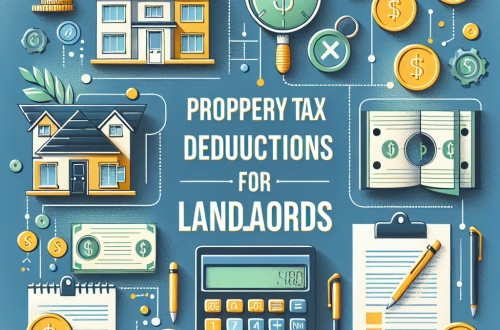Writing Off Expenses For Professional Shears
Article Summary
Writing off expenses for professional shears is critical for cosmetologists, barbers, pet groomers, tailors, and other trade professionals who rely on specialized tools for their income. In the U.S., the IRS allows deductions for “ordinary and necessary” business expenses under strict guidelines, but misclassification or inadequate documentation can trigger audits or denials. Businesses must navigate federal rules (e.g., IRS Section 162) and state variations (e.g., California’s conformity thresholds), balancing immediate tax savings against long-term capital expenditure treatment. Failure to properly allocate mixed-use tools or adhere to substantiation rules may result in penalties, interest, or lost deductions, directly impacting net profitability.
What This Means for You:
- Immediate Action: Document the purchase date, cost, and exclusive business use of shears with receipts and logs.
- Financial Risks: Deductions denied for personal-use allocations exceeding 10% may require repayment with penalties.
- Costs Involved: High-cost shears ($500+) may require depreciation (e.g., 5–7 years) instead of immediate expensing under Section 179.
- Long-Term Strategy: Structure shear purchases as capital expenses to maximize depreciation benefits or use bonus depreciation for immediate write-offs.
Explained: Writing Off Expenses For Professional Shears
Under IRS guidelines, a tax write-off is an eligible business expense subtracted from gross income to reduce taxable income (IRC §162). Professional shears qualify as deductible if they are (1) directly tied to revenue generation (e.g., cutting hair, grooming pets) and (2) not reimbursable by an employer. Federal law permits full expensing for shears costing under $2,500 (per-item de minimis safe harbor), while state rules may differ (e.g., New York limits safe harbor to $1,000). Non-compliance can lead to disallowed deductions under IRC §274(d), requiring “adequate records” for proof.
Eligibility hinges on taxpayer status: Self-employed professionals (Schedule C filers) may deduct 100% of business-use shear costs, whereas employees (W-2) cannot claim unreimbursed work expenses after the Tax Cuts and Jobs Act (TCJA) suspended miscellaneous deductions until 2026. Businesses structured as S-corporations or LLCs must classify shears as either supplies (fully deductible) or equipment (depreciable assets), impacting cash flow timing.
”Writing Off Expenses For Professional Shears” Principles:
The IRS “ordinary and necessary” test (Treas. Reg. §1.162-1) requires professional shears to be common in the trade and helpful for business operations. For example, Japanese-grade cutting shears ($200–$600) are ordinary for licensed cosmetologists but not necessary for casual crafters. Mixed-use shears (e.g., a dog groomer using the same shears for personal pets) require pro-rata allocation—only the business percentage (e.g., 90%) is deductible. Apportionment must be calculated via mileage logs, appointment records, or time-tracking apps to survive IRS scrutiny.
Capital vs. repair distinctions are critical: Routine sharpening ($20–$50 per service) is deductible as a maintenance cost, while replacing blades or upgrading shears to a higher-grade model may be capitalized under IRC §263. The IRS requires consistent treatment—electing to expense shears under Section 179 in one year precludes later depreciation.
Standard Deduction vs. Itemized Deductions:
Most taxpayers claim the standard deduction ($14,600 single, $29,200 married filing jointly in 2024). However, self-employed professionals must itemize business expenses on Schedule C (Form 1040) irrespective of standard deduction claims. For example, a barber earning $60,000 annually deducts $1,200 in shear costs directly from business income, reducing self-employment tax and income tax liability. Employees cannot use shear expenses to itemize deductions post-TCJA unless reimbursed via an accountable plan.
States like California conform to federal itemizing rules but impose tighter documentation standards. Pet groomers in Texas must report shear deductions on federal Form 1040 and state Form 05-158, while Pennsylvania requires separate capital asset reporting for tools exceeding $500.
Types of Categories for Individuals:
Self-Employed Professionals: May deduct 100% of shear costs as “Tools and Supplies” on Schedule C if used exclusively for business. High-value shears ($500+) may be depreciated over 5–7 years or immediately expensed via Section 179 (up to $1.16M in 2024). Independent Contractors: Must issue Form 1099-NEC to clients if shear costs are billed as reimbursable expenses. Employees: Unreimbursed shear expenses are non-deductible except for specific exempt roles (e.g., performing artists, Armed Forces reservists).
Key Business and Small Business Provisions:
Businesses can deduct the full cost of professional shears in the year of purchase under the de minimis safe harbor if the item costs under $2,500 and an accounting policy is in place (IRS Rev. Proc. 2015-56). Alternatively, Section 179 expensing allows immediate write-offs for shears up to $1.16M/year. Repairs and maintenance (sharpening, oiling) are fully deductible as ordinary expenses if they do not prolong the shear’s useful life beyond one year (Rev. Rul. 2001-4).
Record-Keeping and Substantiation Requirements:
The IRS mandates receipts, invoices, or canceled checks showing payee, amount, and purchase date (IRC §274(d)). Logbooks must detail business use percentage—e.g., a hairstylist’s appointment calendar proving shear usage for client services. Records must be retained for 3 years from filing date or 7 years for depreciation claims. Insufficient records during an audit lead to full deduction denial and potential accuracy-related penalties (20% of underpayment).
Audit Process:
IRS audits for shear deductions typically involve a Document Request (Letter 4564) seeking purchase receipts, bank statements, and usage documentation. Auditors apply the “Cohan Rule” sparingly—estimates are allowed only if credible evidence exists (e.g., bank statements showing a $300 shear purchase). High-risk triggers include disproportionate deductions (e.g., claiming $5,000 in shear expenses on $30,000 income) or inconsistent depreciation schedules.
Choosing a Tax Professional:
Select a CPA or Enrolled Agent with experience in beauty/barbering, pet grooming, or textile industries. Key questions: “How do you handle mixed-use tool allocations?” and “Can you cite IRS audit trends for shear deductions?” Verify credentials via IRS Directory of Federal Tax Return Preparers.
Laws and Regulations Relating To Writing Off Expenses For Professional Shears:
Federal: IRS Publication 535 (Business Expenses) outlines deductible tools, while Publication 946 details depreciation rules. Section 179(d)(1) defines eligible property, including “tools used for trade.” State: California FTB Publication 1001 disallows federal bonus depreciation for shear deductions, requiring separate adjustments. New York TSB-M-18(1)I caps safe harbor expensing at $1,000 per item unless taxpayers file Form IT-399. Texas Tax Code §171.1011 conforms to IRS rules but excludes single-member LLCs from shear expensing if classified as disregarded entities.
People Also Ask:
1. “Can I write off professional shears as an employee?”
No. The TCJA suspended unreimbursed employee expense deductions until 2026 (IRC §67(g)). Exceptions apply only to qualifying performing artists, fee-basis government officials, and Armed Forces reservists who must file Form 2106.
2. “Are Japanese-made shears fully deductible?”
Yes, if used 100% for business. High-cost shears (e.g., $600) must meet the “ordinary and necessary” test—proven via testimony from industry peers or trade association guidelines.
3. “What if I use shears for a side business?”
Deductible on Schedule C if the activity qualifies as a for-profit endeavor (IRS “hobby loss rule” tests). Document revenue, clients, and business intent to avoid reclassification.
4. “Can I deduct shear sharpening costs?”
Yes, as a repair expense (IRC §162). Log each service date and cost—e.g., “$45 sharpening on 6/15/2024” with receipt from the service provider.
5. “Do shear deductions differ for mobile groomers vs. salon workers?”
Mobile groomers may deduct shears as part of vehicle tools (Form 4562 depreciation), while salon workers claim them as standalone equipment. State sales tax rules vary for mobile businesses.
Extra Information:
IRS Publication 535: Details deductible business expenses, including specialized tools like shears. California FTB Publication 1001: Clarifies state-specific depreciation adjustments. National Cosmetology Association Guidelines: Industry benchmarks for “ordinary” tool expenses.
Expert Opinion:
Accurate categorization and documentation of professional shear expenses are non-negotiable for maximizing deductions and avoiding penalties. Taxpayers must proactively track business-use percentages and align depreciation strategies with federal and state laws to optimize cash flow. Engaging a specialized tax professional mitigates audit risks inherent in high-tool-cost industries.
Key Terms:
- IRS Section 179 expensing for beauty tools
- Professional shear depreciation guidelines
- Mixed-use tool allocation strategies
- Self-employed shear expense deductions
- State-specific capital expenditure rules for shears
- Documentation requirements for shear write-offs
- De minimis safe harbor for salon equipment
*featured image sourced by DallE-3





